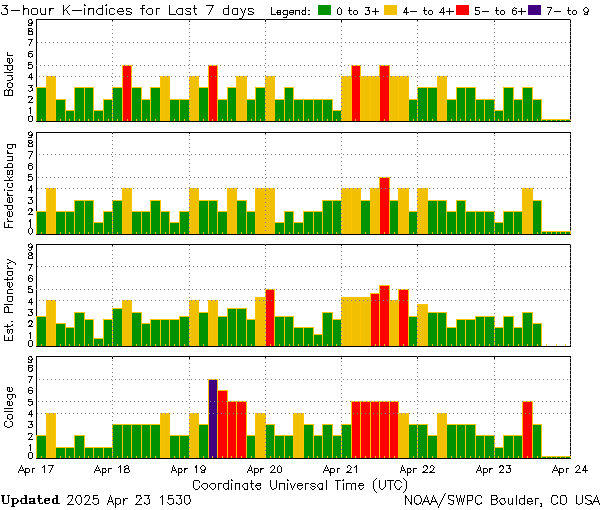
K-Index

The K-Index is a measure of geomagnetic activity caused by solar wind hitting Earth’s magnetic field. It’s calculated every three hours and ranges from 0 (very quiet) to 9 (extremely disturbed). Scientists use magnetometers around the world to track how much the Earth’s magnetic field is “bouncing” from solar storms and space weather.
Why Does the K-Index Matter for Ham Radio?
For amateur (ham) radio operators, the K-Index is a big deal because it tells us how reliable certain radio bands will be for communication.
Low K-Index (0–3): Excellent HF (high-frequency) propagation. Long-distance communication (“DXing”) becomes much easier.
Moderate K-Index (4–5): Bands may get noisy or unstable, especially higher HF bands like 20 meters and up.
High K-Index (6+): Severe disruptions. HF bands can “blackout,” meaning signals fade completely. VHF operators might notice unusual propagation like aurora skip instead.
Space Weather and Radio Adventures
Sometimes, a high K-Index isn’t all bad! During geomagnetic storms, operators can experience rare propagation phenomena like:
- Auroral propagation (using the Northern/Southern lights to bounce signals)
- VHF/UHF openings that allow local bands to reach hundreds of miles
- Strange signal paths that don’t behave like normal
Knowing the current K-Index helps hams choose the right band and optimize their chances of making distant contacts or chasing unusual conditions.

